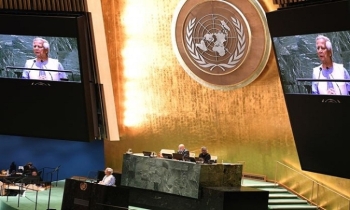Together Again: Physical Distancing on the Decline
Era Dabla-Norris, Frederico Lima, and Hibah Khan, IMFBlog || BusinessInsider

Earlier this year, stringent lockdowns and uncertainty about the severity and transmission of COVID-19 led to the widespread adoption of physical distancing measures across the world. However, as COVID-19 outbreaks began to ebb and lockdowns eased over the summer, measures tracking mobility, such as Google Community Mobility Reports, showed that adherence to keeping our distance from others began to relax. Our ongoing research finds that these increases in mobility were indeed matched by a significant decline in self-reported compliance for a range of recommended COVID-19 behaviors across many advanced and emerging economies.
Looking at data through September, this gradual decline in compliance with recommended COVID-19 behaviors appears to have followed on the heels of governments relaxing restrictive lockdowns earlier in the summer, including allowing shops, restaurants, and other businesses in the service sector to re-open. Lower compliance may have also reflected a mix of fatigue and complacency with COVID-19 restrictions, especially since a disproportionate share of the decline was reported among younger people and other lower-risk groups.
However, the evidence shows that many people were seeking to balance the behaviors recommended to slow the spread of the virus with the need to return to work, care for family members, and maintain social contacts. We see this reflected in different trends across self-reported behaviors. For example, we find that, on average, more people reported attending small social gatherings in September and fewer worked from home compared to March and April. This was accompanied by significantly higher rates of reported mask wearing, particularly in countries where mask wearing in public was initially not common.
Interestingly, there are significant differences in compliance with recommended COVID-19 behaviors across demographic groups. For example, women consistently reported higher adoption of physical distancing than men, even accounting for their employment status, household size, and number of children. This is consistent with findings that women are more risk averse than men. So too did older people and other at-risk groups. People who trust their government’s response to COVID-19 were also more likely to adopt the recommended behaviors.
Trust in the government response appears to have declined in several countries, especially in those that had more severe COVID-19 outbreaks. This combination of eroding trust and lower compliance is likely to create challenges in the months ahead, as many countries face the possibility—and in some cases already the reality—of new COVID-19 outbreaks.
Era Dabla-Norris is a Division Chief of the Asian I Division in the IMF’s Asia Pacific Department and mission chief for Vietnam.
Frederico Lima is an economist at the International Monetary Fund.
Hibah Khan is a Research Assistant in the IMF’s Asia Pacific Department where she works in the ASEAN-1 Division.
This article first appeared on the IMFBlog.

























